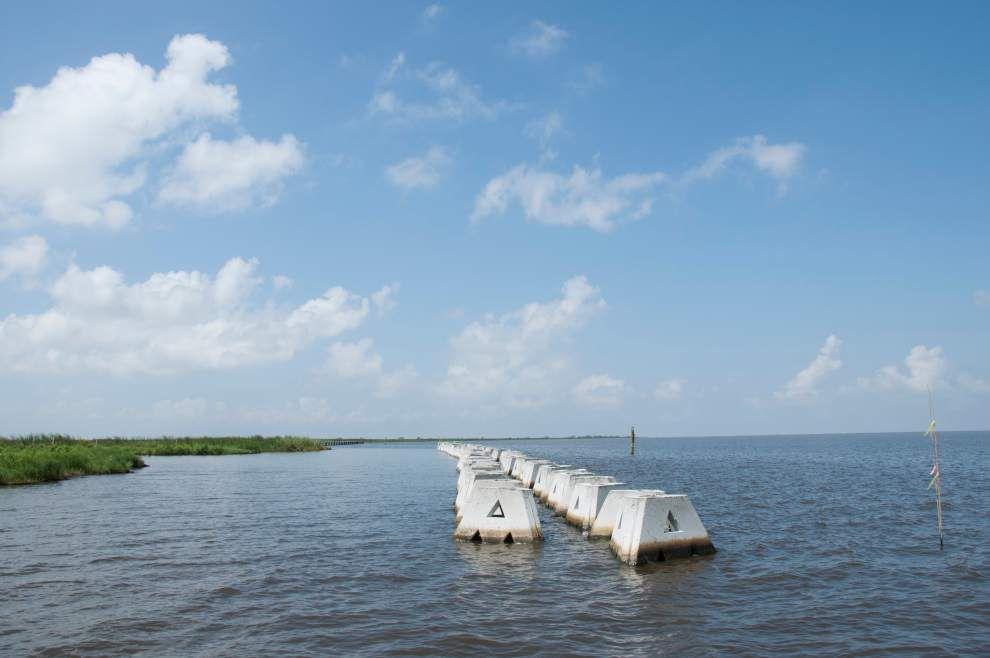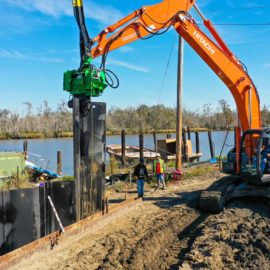
Years ago this was the only coastal protection we needed. Don’t let the ships run aground. Then the coasts began to erode and we needed to focus on saving the land. Now we pay $5.5B a year and we continue doing what has caused the problem. Bob Marshall comments on this.
And now some headlines: The New Orleans Saints are moving to San Antonio. The price of crawfish dropped below $1 a pound. A new state law bans concealed carry of firearms in public places. Obviously, none of that is true. But if any of those stories had been reported by local newsrooms last week, the state would still be in an uproar. Well, real news with immense impact on Louisiana did break last week: Louisiana’s Coastal Protection and Restoration Authority reported that coastal communities could see $5.5 billion in damages annually from climate change starting next year. And the reaction from residents was generally: “Did you see how much crawfish costs now?”
nola.com
Science speaks and some listen. But culture reigns supreme for many who also deny science.
There’s a lot to unpack here, none of it is good news for our state. It involves the steady march of science and the depressing cultural reasons Louisiana refuses to face reality. Both demand quick action for anyone counting on a livable future here beyond the next 30 years. First, the damage predicted comes from the increasing impacts of global warming already underway: higher storm surge from the combination of larger hurricanes and unrelenting subsidence and sea level rise. Second, the prediction is based on what would happen if the state immediately ended its Coastal Master Plan. No one expects that to happen, but just six years ago the same metrics predicted “only” $2.7 billion in annual damages. What changed? The world’s inability to address the engine driving warming and its impacts: rising greenhouse gas emissions primarily from fossil fuel use. Indeed, CPRA models in 2017 concluded major hurricanes in the Gulf are “expected to increase in frequency by 13% to 83% over the next 50 years.” Third, this is another sign that the Coastal Master Plan is due for some serious revisions. When introduced 15 years ago, the plan projected its projects would be rebuilding more wetlands than were being lost in aggregate by 2067.

The list continues and in part, it shows mistakes we made as well as initially underestimating nature.
That promise was withdrawn in the 2017 plan, which concluded by 2067 we will have lost an additional 1,200 to 2,800 square miles of our bottom third — even if all projects were built and working optimally. What changed? Emissions are pushing sea level even higher than anticipated. Fourth, this news came the same week reporting showed the revamped, risk-based National Flood Insurance Plan might cause premiums to rise by more than 450% in parts of New Orleans and nearly 900% in areas of Covington. Notice the term “risk-based.” Last week’s report of $5.5 billion in annual damages is based on the risk drawn from the science. Just how high will premiums have to rise to convince an insurance company to gamble on that kind of risk? And what bank will approve a mortgage for a home or business without flood insurance in an area with such high flooding risk? Is there a way out? Not completely.
Simplicity it is to follow science. But the costs we be high and the return probable not what we desire totally. We also have a party that denies what is happening.
According to the science, the heat already stored in the oceans will continue to power sea level rise and larger storms for decades. However, there is still time to take steps to slow the increase of risk and mitigate the damage with adaptations. The Intergovernmental Panel on Climate Change — consisting of the smartest people on the planet on this science — estimate the world has about 8 years to reduce current emissions by about 50%. That can only be done with serious government regulations. And that brings us back to the lack of concern generated by that real news from the CPRA. In representative government, determining political responsibility for inaction can be a chicken-and-egg proposition. Should politicians lead or only follow the wishes of their constituents? But as long as Louisiana voters continue to pay little heed to stories about the science warning of impending disaster and reelect politicians who show the same lack of concern, there’s only one conclusion. There are no eggs in this situation, only chickens.
We will have a change of administration and the chances are a climate denier. What will happen then when the chickens rule the hen house.



